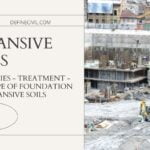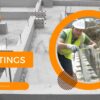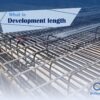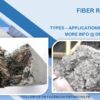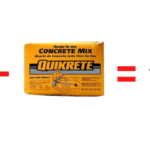The manufacturing sector forms a vital part of many countries’ gross domestic product (GDP). For example, in the US, manufacturing typically accounts for around 11% of the country’s total GDP. It is a vital employer of both skilled and semi-skilled staff and helps to stimulate the wider economy. In every form of manufacturing, one of the key goals is to improve the efficiency of operations.
Manufacturing is a significant part of the gross domestic product (GDP) of many countries. For example, in the United States, manufacturing is typically 11% of the country’s total GDP. It is an important employer of skilled and semi-skilled workers and helps stimulate the wider economy. The main objective of any construction is to improve the efficiency of the project.
Simply put, if you can run raw materials at 1000 units per hour, you will be doing twice as much work as a factory that can only produce half of those units. By keeping unit costs to a minimum, manufacturing companies can improve their profit potential. They can also compete effectively with other firms, especially firms operating overseas, and can benefit from lower labor costs. However, improved efficiency can be achieved through a variety of methods and techniques. This article will outline some basic strategies for improving efficiency in manufacturing.
Table of Contents
- Additive manufacturing methods
- Reducing unplanned downtime
- Effective staff training
- Behavioral Modification for Productivity
- Measuring Productivity
- Engagement and Communication
- Creating a Winning Team

Additive manufacturing methods
Traditionally, manufacturers relied on complex production lines to manufacture their products. Typically, raw materials have different production processes at each stage of the line, and the final word at the end of the process This process is used throughout production in various specific industries in many cases. However, in recent years, new technologies have been incorporated into the manufacturing process. One such technology is the use of additive manufacturing techniques. You can click here to read more about this methodology.
Simply put, additive manufacturing is where an industrial 3D printer is used to scale up manufacturing processes. Materials are often designed on a CAD platform, before being transferred to a 3D printer. Using this method, extreme precision of the design can be achieved and the product is perfect. Today this process is widely used in manufacturing, especially when rapid mass production with precise quality standards is required
Reducing unplanned downtime
The main challenge in manufacturing is minimizing downtown of machinery and production lines. This is where production, usually for repair or maintenance of critical equipment, should be halted when it breaks down or malfunctions. An unexpected and unplanned outage can be costly for a construction company. It is estimated that unplanned downtime can cost manufacturing companies $50 billion a year. Unintended downtime that halts production in automobile manufacturing is counted in minutes and can cost up to $22,000 per lost minute of production
It is very important to keep production lines running for as long as possible and to minimize unplanned downtime. A key way to do this is to integrate predictive maintenance technology into your manufacturing process. Using a variety of process monitoring tools in conjunction with an analytics platform, a company can monitor the status of key machines in real time.
Accurate predictions can be made when devices will need service or repair before faults occur. This allows manufacturing companies to take planned downtime for maintenance and repair, and preferably during off-peak periods
Effective staff training
The importance of training effective manufacturing personnel cannot be underestimated. Employees may be required to operate certain types of machinery or work on different production equipment. Considerable training will therefore be required to ensure that the machines can be operated as intended and achieve the highest levels of production. Poorly trained personnel do not fully understand how to use the equipment. This, in turn, can result in debris or mechanical failure, causing scheduled downtime on the manufacturing plant. In addition, well-trained staff can do things safely.
Many components and many pieces of equipment are inherently dangerous if workers do not fully understand their proper functions and necessary safety precautions Workplace accidents can halt production, time lost through inattentive injury , and even claims for damages have been filed against the company was) All manufacturing companies should ensure that new starters receive comprehensive training as part of the onboarding process. Ideally, this training will be reinforced through mandatory annual training programs that seek to upgrade skills and promote safe work practices.
Behavioral Modification for Productivity
Paul Hogan from Free Point Technologies emphasizes the importance of behavioral modification in boosting productivity. It involves getting everyone in the plant to focus on value-added tasks while recognizing and minimizing non-value-added activities.
Measuring Productivity
Traditional metrics like hours worked and output quality are objective but don’t directly measure productivity. Free Point introduces a simple visual indicator, a blue bar when adding value and no bar when not. This immediate feedback helps workers understand their impact on productivity.
Engagement and Communication
Making value-adding activities visible encourages conversations and collaboration among operators, supervisors, and management. It shifts the focus from monitoring to listening and acting on feedback from the frontline workers.
Creating a Winning Team
Engagement and behavior modification go beyond technology and cost-effectiveness. They create a sense of being part of a winning team, where everyone’s contributions are recognized and celebrated, leading to a more motivated and productive workforce.




